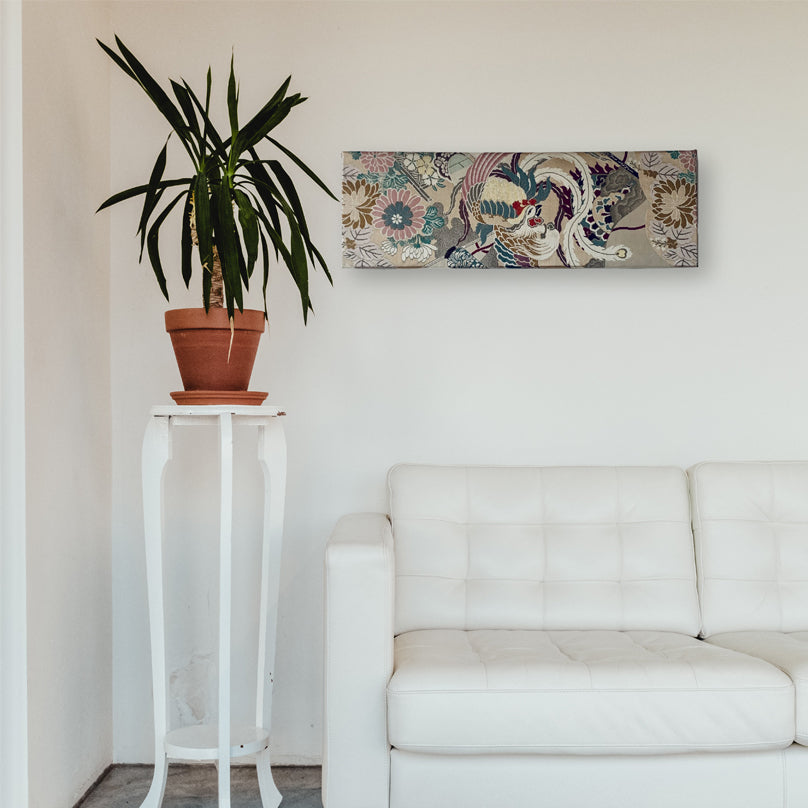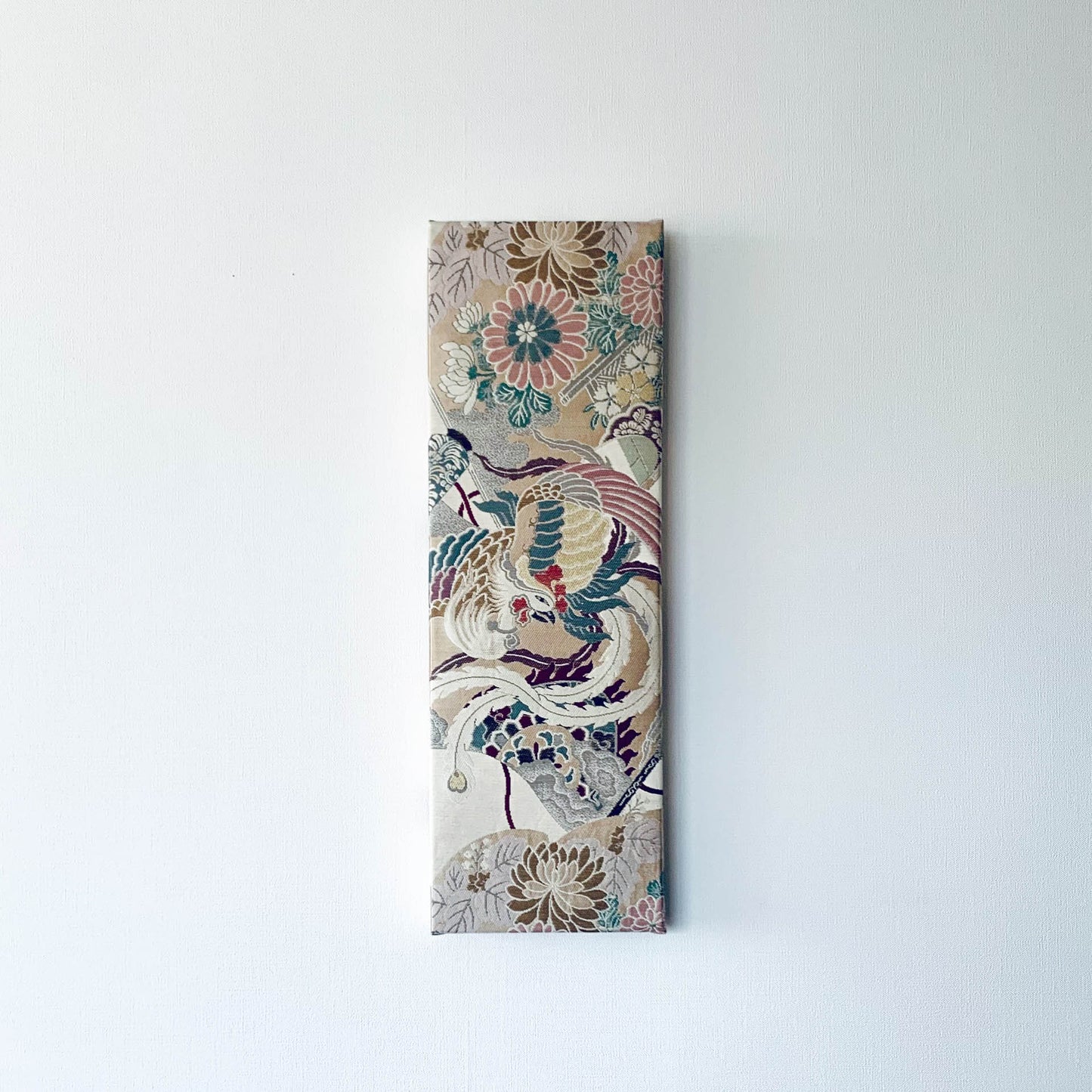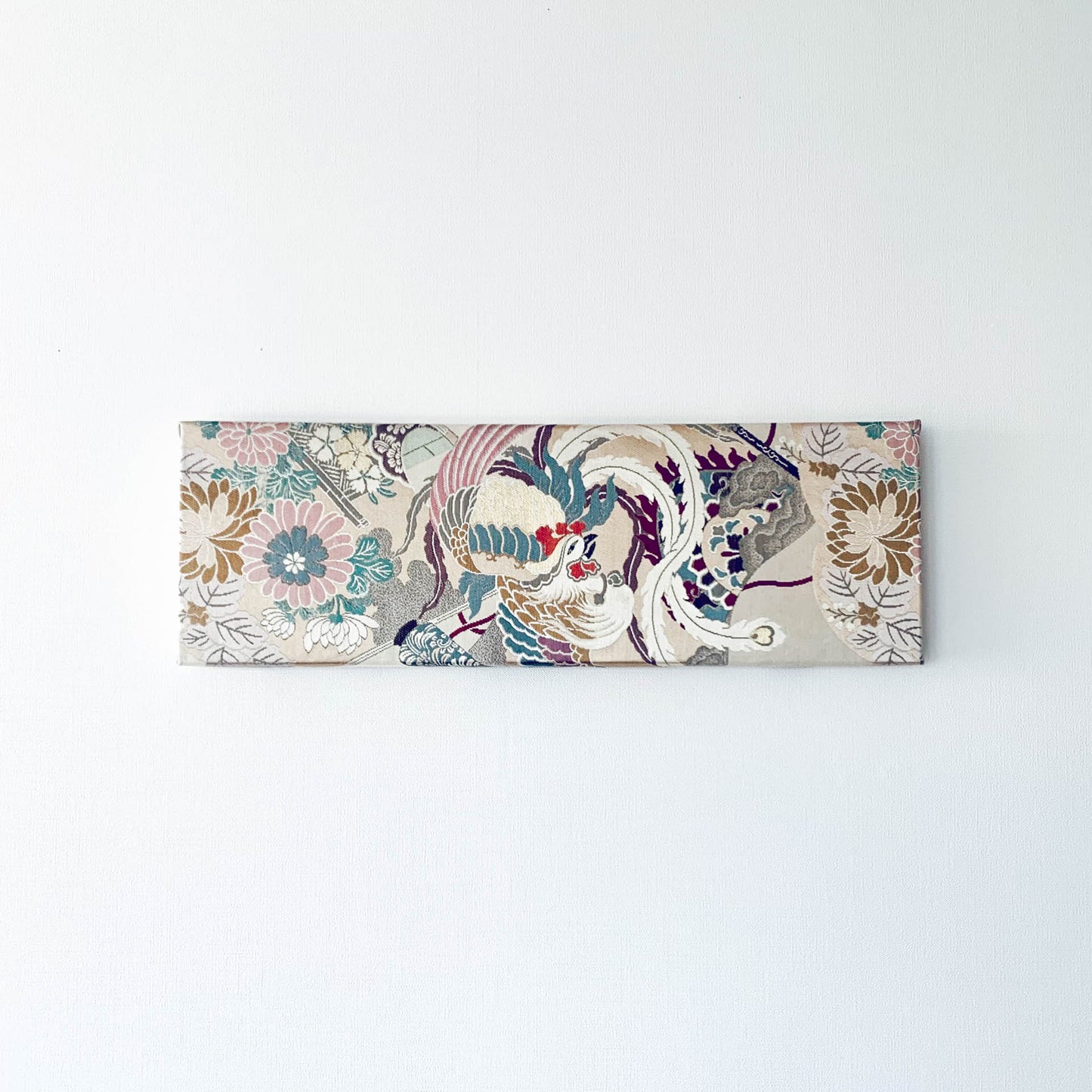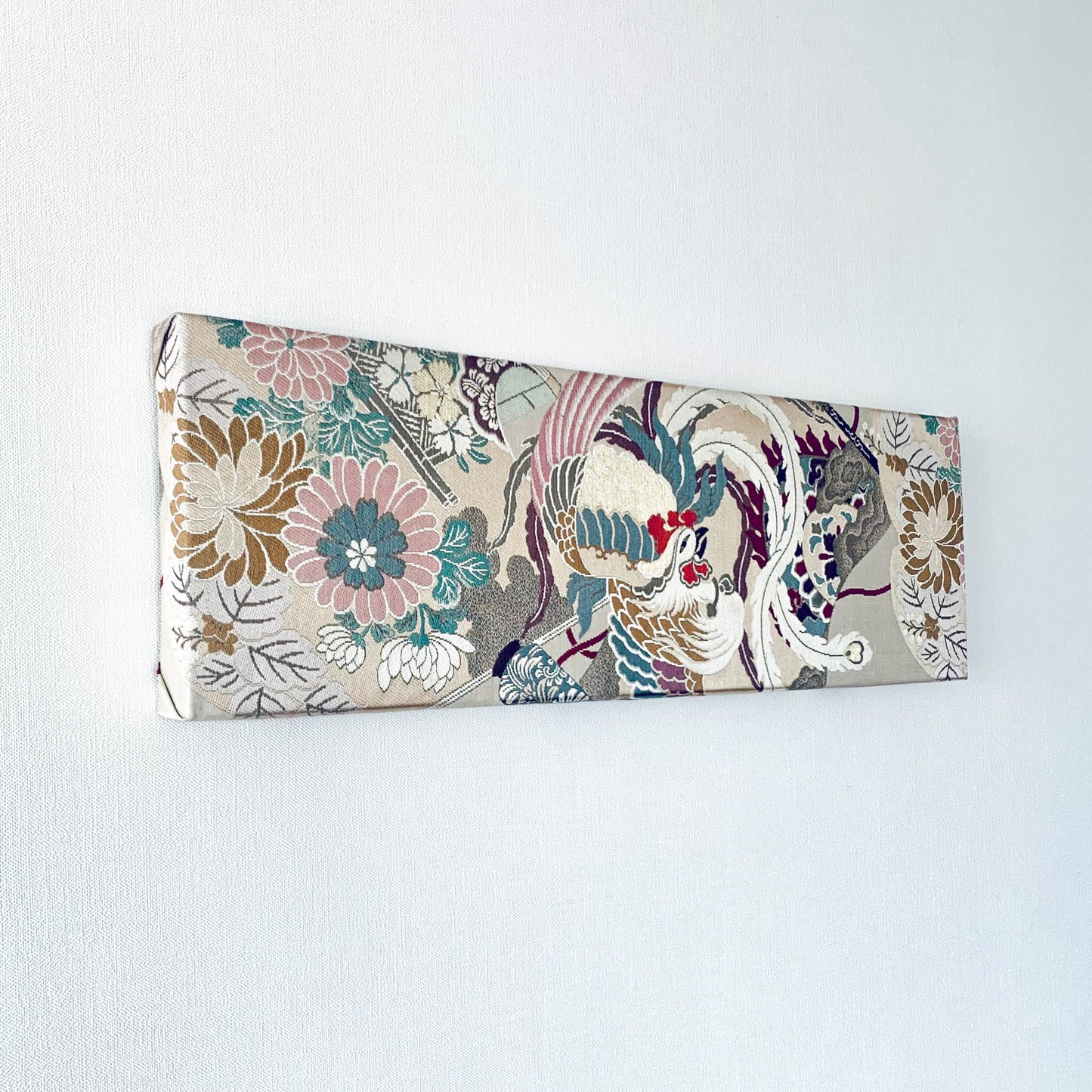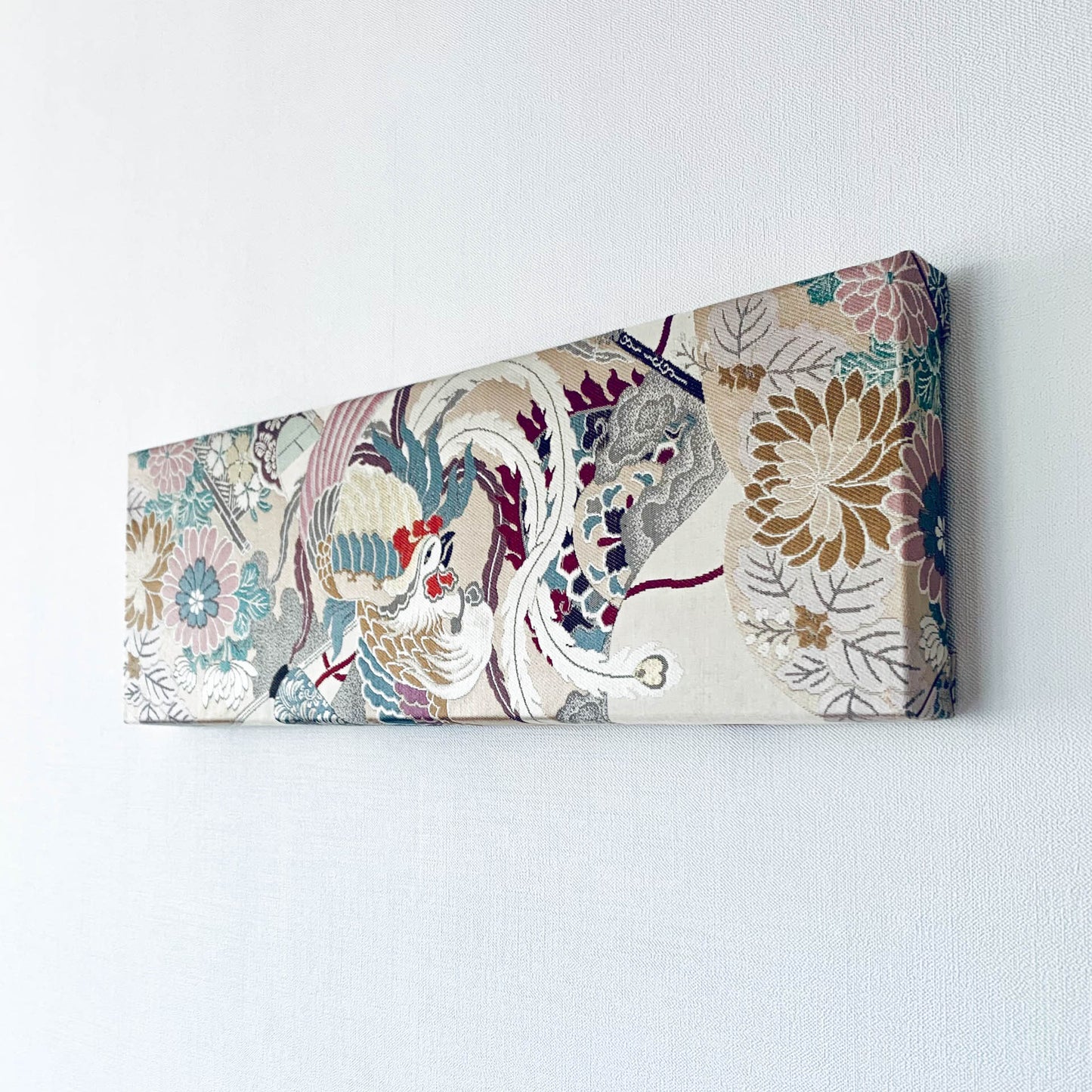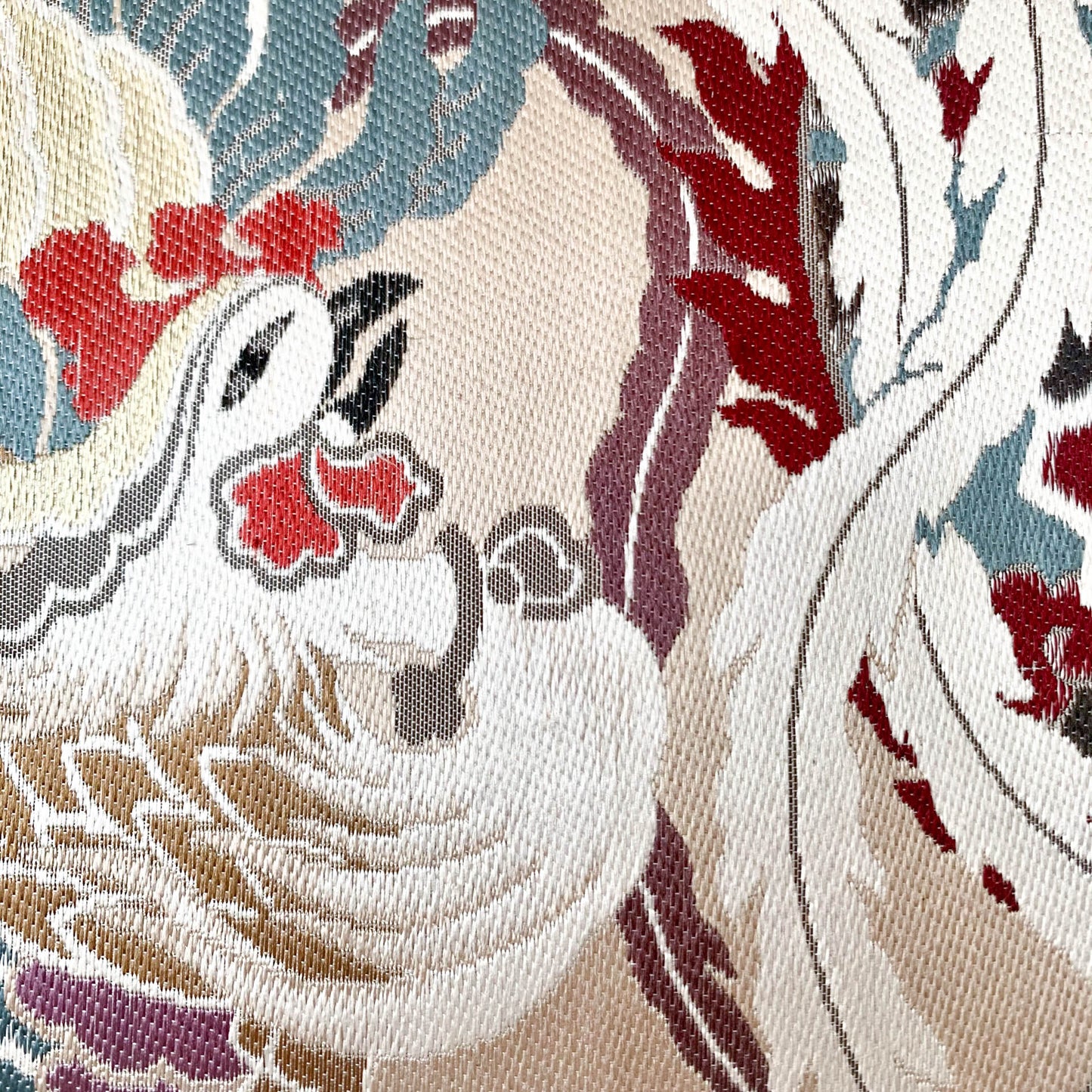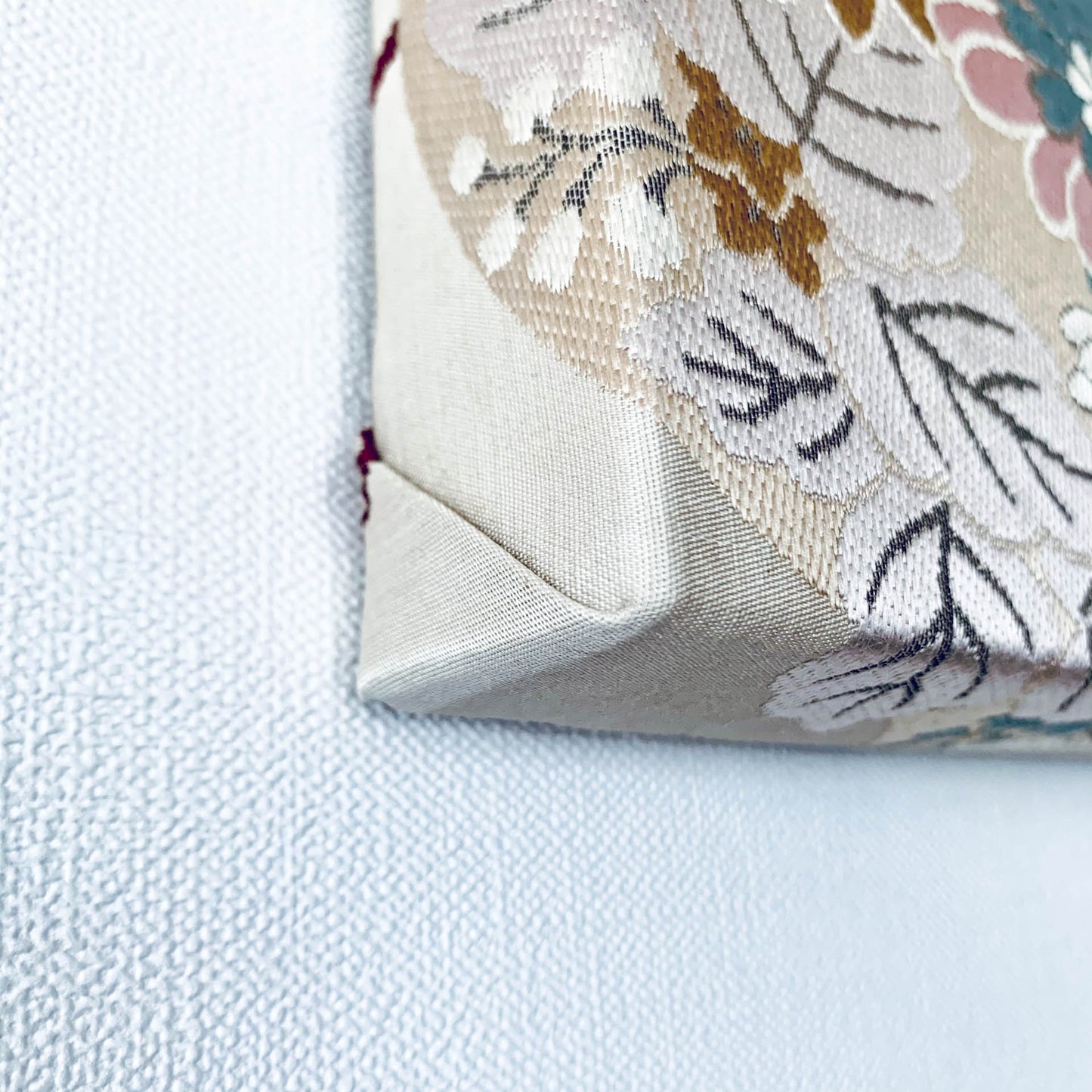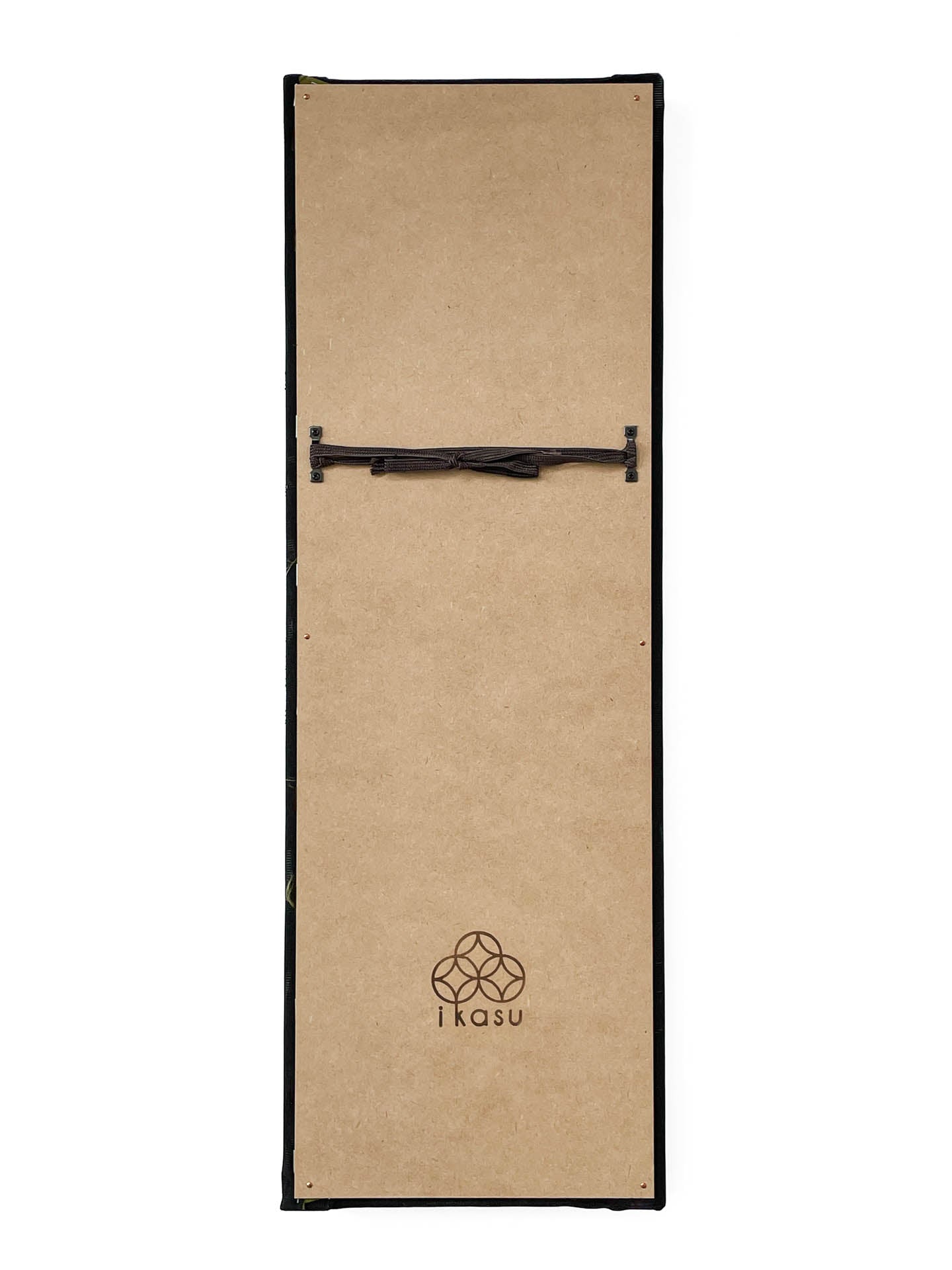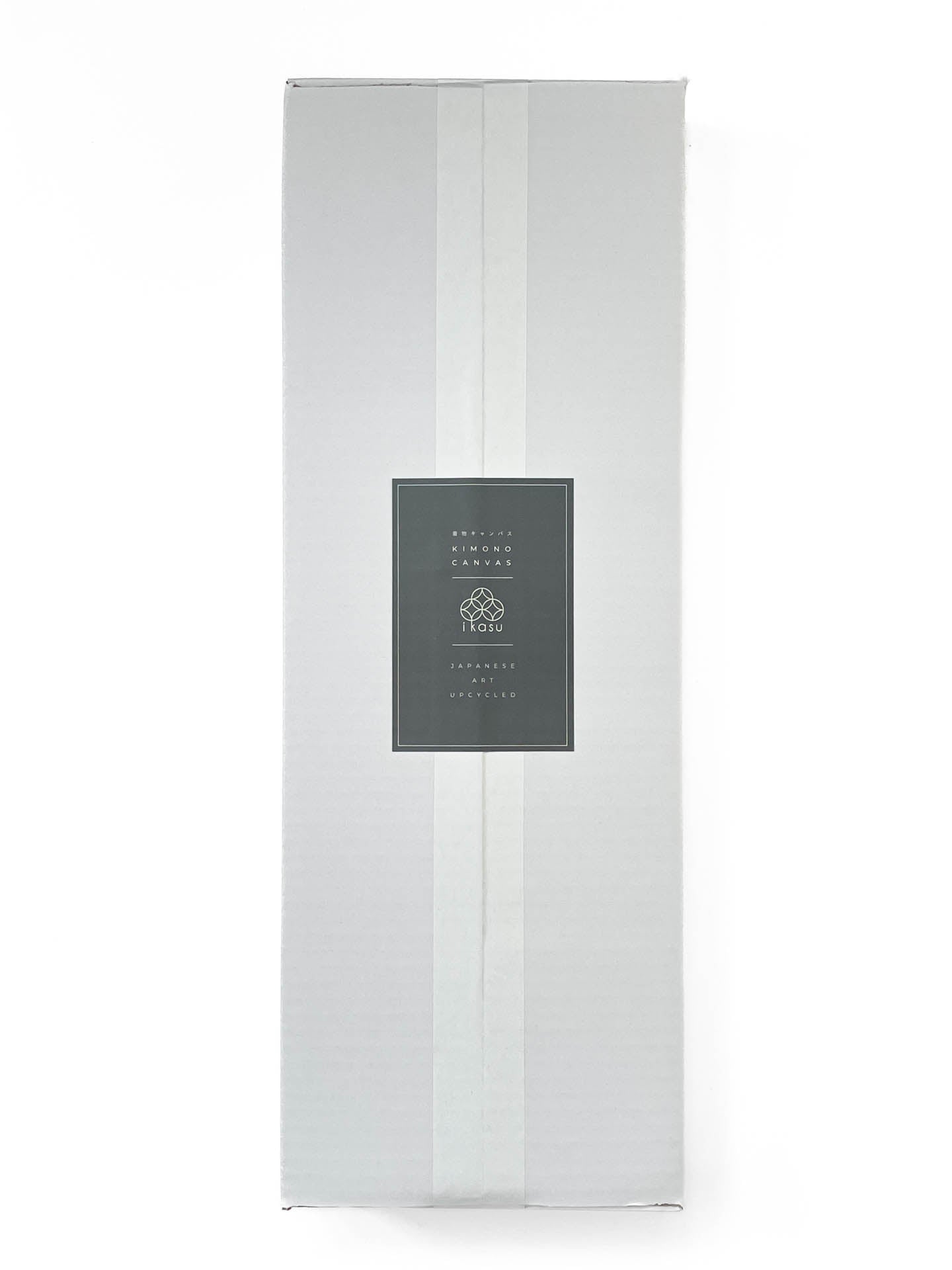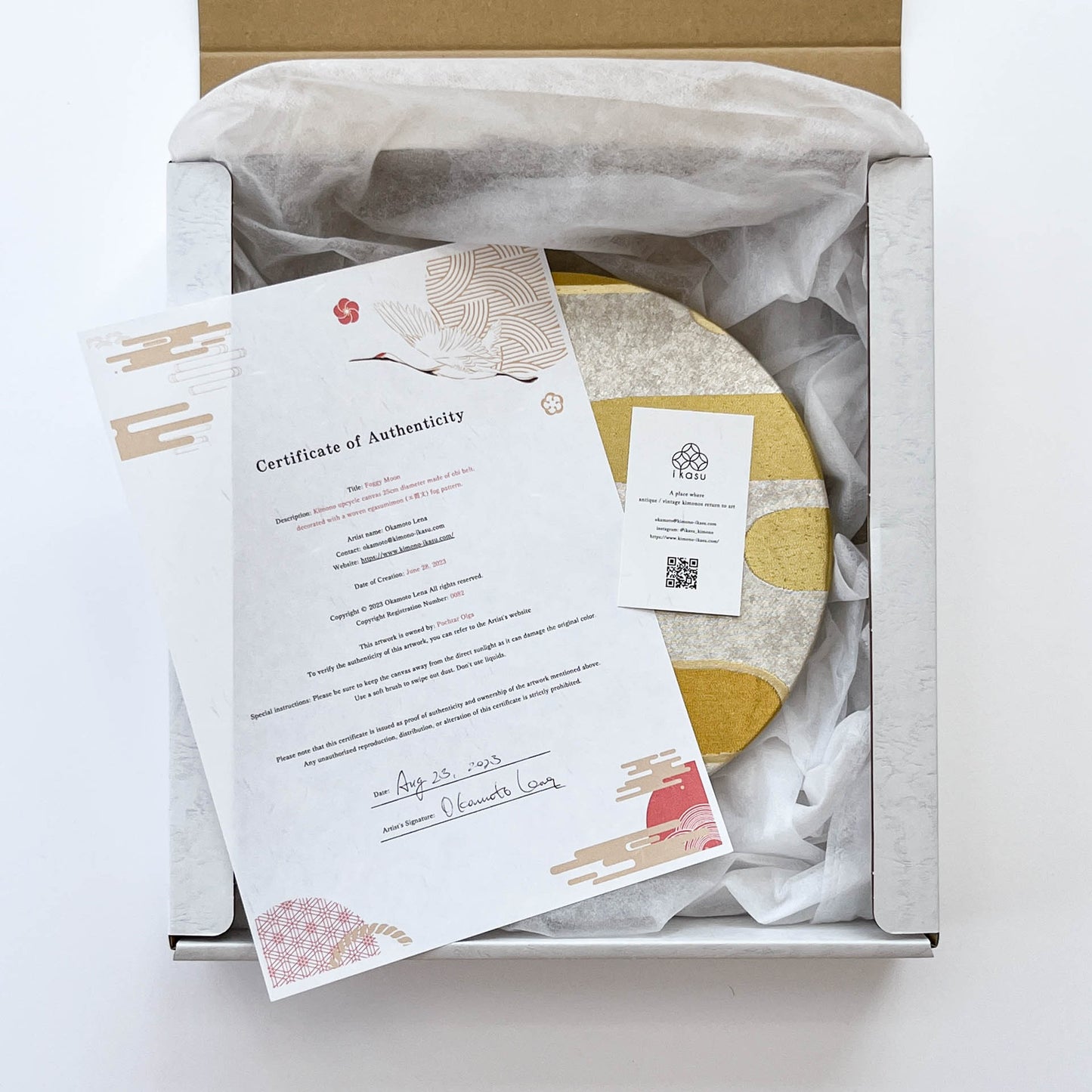From the Ashes ~Serendipity~
From the Ashes ~Serendipity~
Verfügbarkeit für Abholungen konnte nicht geladen werden
Size
about 20cm x about 60cm x about 4cm
Materials
wooden frame, cotton linen canvas (under-layer), pure silk (outside-layer)
About this canvas
The depiction of a phoenix in subtle grey shades showcases a remarkable example of Japanese weaving craftsmanship from the early 20th century, creating a stunning artwork.
Period/Story
This obi, having been preserved for over a century without use, remains in remarkably good condition while retaining the nostalgic atmosphere of the Taisho era.
Explanation and meaning of pattern and colors
This obi is adorned with the graceful and flowing patterns of phoenixes and various surrounding plant motifs, including chrysanthemums, paulownia, and dianthuses. The background design also features partitions and paper scrolls, evoking the elegance associated with the aristocracy of the Heian period.
The phoenix, a legendary bird of good fortune in Chinese culture, is often seen as a symbol of peace and happiness. It is believed that phoenix eggs possess miraculous properties for promoting longevity, and the phoenix itself is associated with concepts like "longevity" and "rejuvenation." Introduced to Japan during the Nara period (710-794), the phoenix motif can still be found on national treasures such as brocade textiles stored in the Shosoin Repository.
Paulownia is believed to be the tree where the phoenix resides, chrysanthemums symbolize longevity, and dianthus represents loveliness.
The subtle grey tints used throughout the obi were particularly popular during the Edo period (1603-1867), offering a wide range of variations, including silver-grey and pinkish-grey, which were enjoyed by people of that time.
Description of fabric characteristics
This maru-obi is crafted from Nishijin silk fabric. Maru-obi, characterized by patterns that extend from end to end on both the front and back sides of the obi, was once a common choice for luxurious and formal obis. However, due to the immense amount of handwork involved in producing a single obi, this style is no longer produced in Japan today.
Decoration Advice
The canvas can be displayed on a table, wall, etc. You will need tacks or nails to hang it on the wall. Because it is light, you can hang it with two ordinary thumbtacks. You can also lean it against an easel. Perfect for redecorating your room, as a housewarming gift, as a present, or as a souvenir for your loved ones! The product will be carefully wrapped and sent, so it can be used as a gift on the go.
Precaution
All the works are made from real kimonos, antiques and vintages. For this reason, the fabric may have traces of long-term use and minor fabric damages. - In case there are any scratches or stains, we always add a photo of the area on the item page, so please check before purchasing. Regarding precaution, cancellation and refund policy, please refer to the refund policy in the footer section of the site for information.
The last pictures in the gallery are the pictures of the reverse side of the canvas, the attachments and the package.
